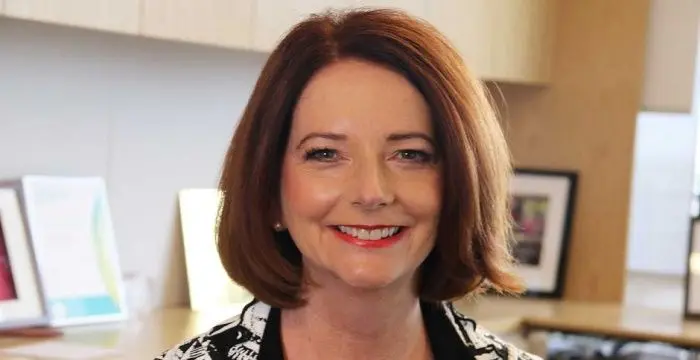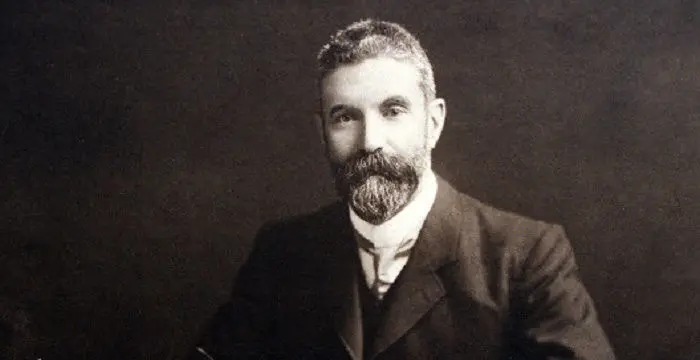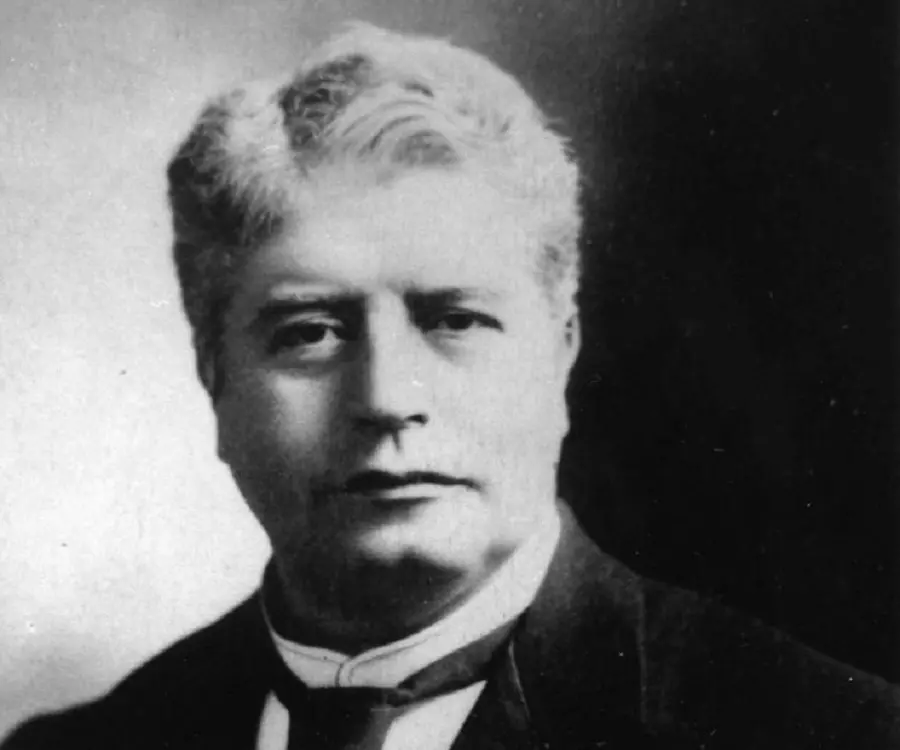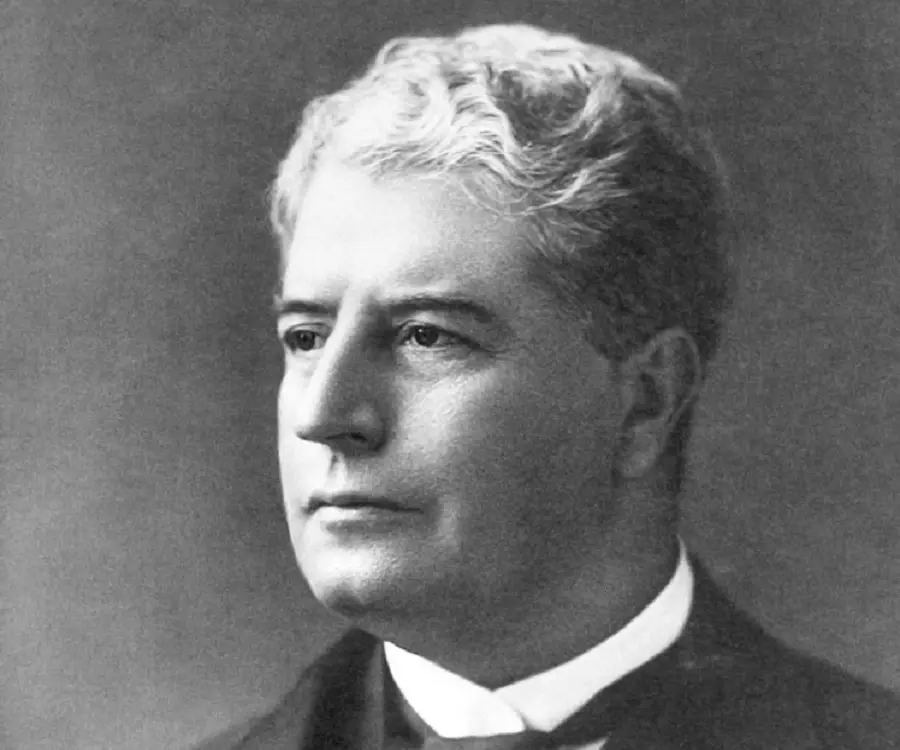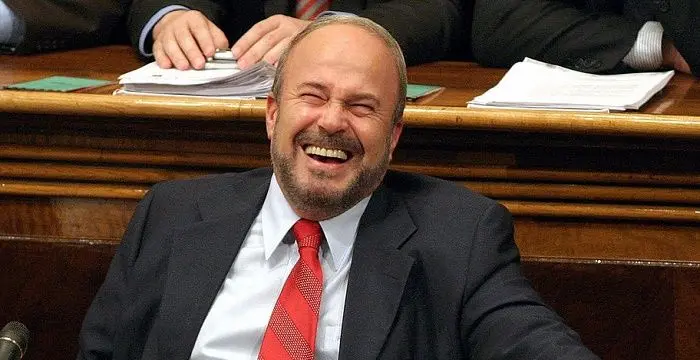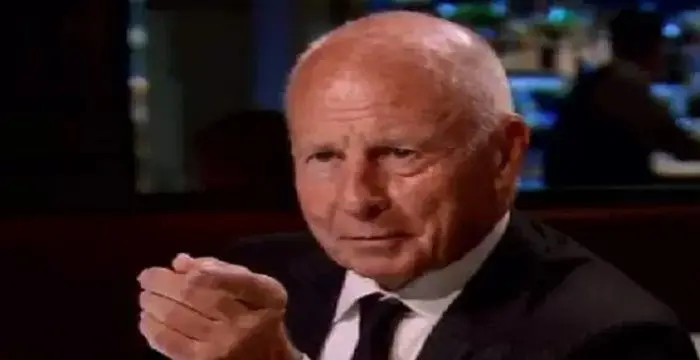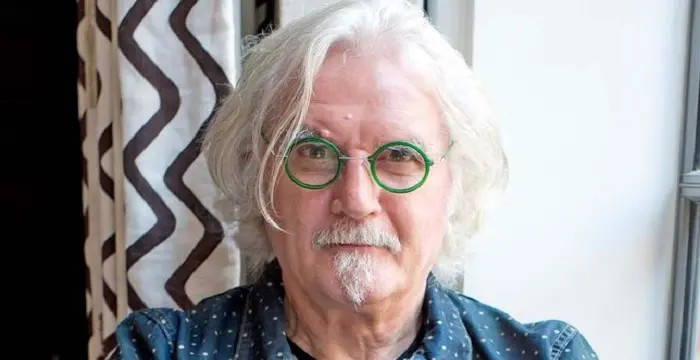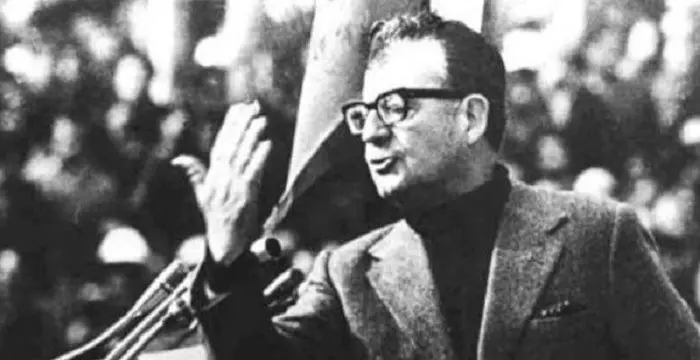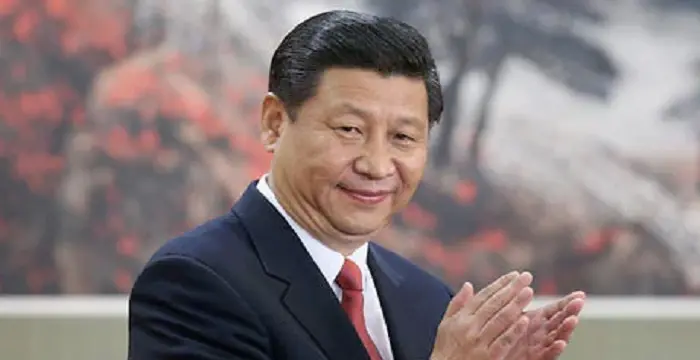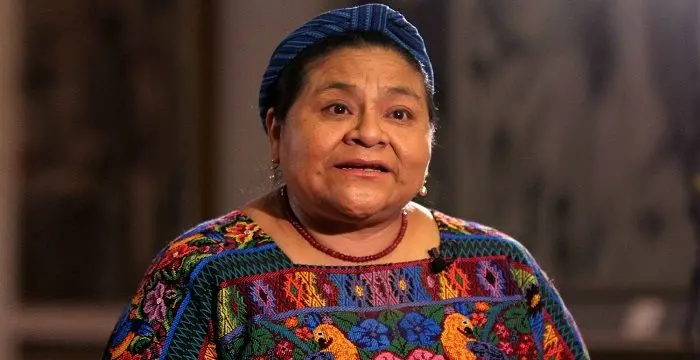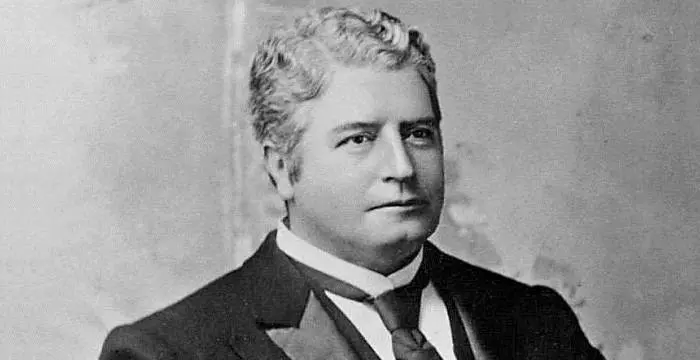
Edmund Barton - Former Prime Minister of Australia, Birthday and Childhood
Edmund Barton's Personal Details
Sir Edmund Barton was the first Prime Minister of Australia and the founding member of the High Court of the nation
| Information | Detail |
|---|---|
| Birthday | January 18, 1849 |
| Died on | January 7, 1920 |
| Nationality | Australian |
| Famous | Socialists, Lawyers & Judges, Prime Ministers, Former Prime Minister of Australia |
| Ideologies | Socialists |
| Spouses | Jane Mason Ross |
| Siblings | George Burnett Barton |
| Known as | Sir Edmund Barton |
| Childrens | Arnold Hubert Barton, Edmund Alfred Barton, Jean Alice Barton, Leila Stephanie Barton, Oswald Barton, Wilfrid Alexander Barton |
| Universities |
|
| Birth Place | Glebe |
| Political Ideology | Political party - Protectionist |
| Religion | Anglican Church of Australia |
| Gender | Male |
| Sun Sign | Capricorn |
| Born in | Glebe |
| Famous as | Former Prime Minister of Australia |
| Died at Age | 70 |
// Famous Former Prime Minister of Australia
Julia Gillard
Julia Gillard is a former Prime Minister of Australia and the first woman to hold the position. To know more about her childhood, career, profile and timeline read on
Alfred Deakin
Alfred Deakin was an Australian prime minister who is credited with the implementation of many significant welfare policies. This biography provides detailed information about his childhood, profile, career and timeline
Harold Holt
Harold Holt was the 17th Prime Minister of Australia. This biography provides detailed information about his childhood, life, achievements, works & timeline
Edmund Barton's photo
Who is Edmund Barton?
Sir Edmund Barton was the first Australian Prime Minister who was a strong crusader of federalism, supporting a united commonwealth. He also strongly advocated the practice of trade without any restrictions posed by duties and taxes. He began his political career as a member of the Legislative Assembly of the 'University of Sydney' electoral division. He was later appointed to the districts of Wellington and East Sydney, during which he was also appointed as a speaker to the Legislative Assembly. He was initially a member of George Dibbs' government, later moving on to the party of Henry Parkes. In his struggle to get federal policies introduced into the constitution, he was supported by his friend Richard O'Connor and his successor Alfred Deakin. In the early 1900s, with his increased popularity, he was appointed the Prime Minister of Australia. He remained in office for around two years, introducing important reforms, before resigning to establish the High Court of Australia, where he served as a judge till his death. This celebrated political leader is the recipient of four knighthoods, of which he accepted only one. Even today, he is revered by many, and several places in Australia are named after this brilliant leader as a tribute
// Famous Prime Ministers
Edi Rama
Edi Rama is the current Prime Minister of Albania. Check out this biography to know about his childhood, life, achievements, works & timeline.
Leo Varadkar
Cam Leo Varadkar is the current Taoiseach—the Prime Minister—of the Republic of Ireland. Check out this biography to know about his childhood, family life, achievements and other facts about his life.
Fatos Nano
Fatos Nano is an Albanian politician who served as Prime Minister of Albania for several times. Check out this biography to know about his childhood, life, achievements, works & timeline.
Childhood & Early Life
Edmund Barton was born to William and his wife Mary Louise, on January 18, 1849, in the New South Wales’ suburb of Glebe.
He pursued his elementary education from the 'Sydney Grammar School' and 'Fort Street High School'. He later attended the 'University of Sydney', where he studied classical literature, and was awarded a medal along with his honours degree. During his time in college, he also showed an interest in rowing and cricket.
Career
After completing his studies, Edmund began working as a barrister in 1871. Five years later, he contested for a seat in the Legislative Assembly, belonging to the 'University of Sydney'. He lost the poll, not only then, but also on a second occasion, the following year.
In August, 1879, Barton contested once again in the Legislative Assembly, and this time he won the elections. The following year, the Assembly was dissolved, and he was appointed a member of the electoral committee in Wellington, New South Wales.
He served on the Wellington committee for two years, before being appointed to the East Sydney electoral district, where he was a member from 1882-87.
Around the same time, he also acted as the Legislative Assembly's speaker, becoming the youngest member, at the age of thirty-three, to be appointed in such capacity. In 1884, he began leading the 'University of Sydney Union', as its President.
From 1887-89, Edmund became a member of the Legislative Council, and was also made the Attorney-General of the government led by George Dibbs, belonging to the 'Protectionist Party' of Australia.
The young politician was a supporter of Australian federation, which aimed at uniting six different colonies into one single commonwealth. Thus in March 1891, Barton attended the 'National Australasian Convention', as an advocate of federal leader Henry Parkes' government.
As a delegate of the convention, Edmund insisted that trade in the country be made restriction-free. He also played a major role in writing a constitution that was used as a basis for the one implemented later in the nation.
However, his suggestions were not taken seriously by the advocates of protectionism, and the strong-willed political leader decided to step down from the legislative Council.
Parkes' government too did not last long, and in 1891, Barton was appointed in-charge of the federal movement by Parkes. Despite his best efforts however, federal resolutions did not get implemented by the government.
In December 1893, the political leader had to resign from his post as Attorney-General, when his decision to fight a case against the government along with friend Richard O'Connor, came into light.
When the politician contested in the elections held at the Randwick region, in July, 1894, he failed to win. He refrained from contesting again the next year, since he had a large family to provide for.
In 1897, he took part once again, this time winning the elections with majority votes. As a member of the 'Constitutional Convention', along with Sir Samuel Griffith, he helped draft a constitution that provided for federal resolutions.
In the next few years, he got elected to the legislative Council, and handled bills pertaining to the proposed federation. He also lost the Legislative Assembly elections against fellow politician, Reid. The latter however joined Barton, in 1899, in his campaign for federation of Australia.
The same year, Edmund stepped down as leader of the opposition, and was replaced by William Lynn. In 1900, with the goal of making the British government realise the importance of the federation bill, he left the Parliament and went to London with friends Charles Kingston and Alfred Deakin.
After a failed attempt by the anti-federal William Lyne to form a new government, Edmund was made the Prime Minister on January 1, 1901. The new Prime Minister's cabinet included great political minds, including Alfred Deakin, James Dickson, Richard O'Connor, and George Turner, amongst others.
Sir Edmund's government held the first ever federal poll in March 1901, where the Prime Minister was appointed at the electoral division of Hunter, without a single opposition candidate.
As the Prime Minister, he introduced certain reforms, of which some were considered progressive while others were not.
He passed the 'Immigration Restriction Act', which gave officials the right to prohibit any one they wanted to from entering Australia. This also formed the basis of the 'White Australia' policy, which only allowed white Europeans to settle down in the nation. In 1902, he gave women citizens the right to vote in the federal elections.
In 1903, he quit the parliament and went on to found the 'High Court of Australia', acting as its justice. His post as Prime Minister was taken over by his good friend, Alfred Deakin, on September 24. As a judge, Sir Barton was known to have been fair and impartial.
Major Works
Sir Edmund is known for his efforts to unite the self-governed states of Australia, into a united commonwealth, and enhancing the practice of international trade without any restrictions. These federal policies were implemented by this former Prime Minister, and later practised when he resigned and became a judge.
Awards & Achievements
In 1900, he was awarded an honorary doctorate in law ('LL.D.') by the 'University of Cambridge'.
After three attempts at knighting Sir Barton, he finally obliged in 1902, when he was appointed by the British Government as a 'Knight Grand Cross of St Michael and St George'. He became the first Prime Minister to receive the honour while still in office.
In 1905, the great Australian politician received the 'Grand Cordon, Order of the Rising Sun', from the government of Japan.
Personal Life & Legacy
In 1877, the young politician got married to Jane Mason Ross, who he had met in Newcastle. The couple had six children, Edmund Alfred, Wilfrid Alexander, Jean Alice, Arnold Hubert, Oswald, and Leila Stephanie.
Sir Edmund succumbed to a heart attack on January 7, 1920, at New South Wales' 'Hydro Majestic Hotel'. This great judge and politician, was buried in the 'South Head General Cemetery', located in Vaucluse suburb.
During 1951-69, this former Prime Minister featured on Australian stamps on two instances.
Highways, government buildings, and suburbs in Australia have been named after this revered political leader. They include the 'Barton Highway', which links Canberra to the Hume Freeway, and the 'Edmund Barton Building' which is a government office premise.
Trivia
“Toby Tosspot” is the nickname of this famous Australian Prime Minister, given to him by ‘The Bulletin’ magazine.
// Famous Lawyers & Judges
Sunny Hostin
Sunny Hostin is an American lawyer, social commentator, columnist and journalist. Check out this biography to know about her childhood, family life, achievements and fun facts about her.
Thomas Girardi
Thomas Girardi is an American attorney who co-founded the law firm, Girardi & Keese. Check out this biography to know about his childhood, family life, achievements and fun facts about him.
Jerry Sheindlin
Jerry Sheindlin is an American judge, author, and television personality. Check out this biography to know about his childhood, family life, achievements and fun facts about him.
Edmund Barton biography timelines
- // 18th Jan 1849Edmund Barton was born to William and his wife Mary Louise, on January 18, 1849, in the New South Wales’ suburb of Glebe.
- // 1871After completing his studies, Edmund began working as a barrister in 1871. Five years later, he contested for a seat in the Legislative Assembly, belonging to the 'University of Sydney'. He lost the poll, not only then, but also on a second occasion, the following year.
- // 1877In 1877, the young politician got married to Jane Mason Ross, who he had met in Newcastle. The couple had six children, Edmund Alfred, Wilfrid Alexander, Jean Alice, Arnold Hubert, Oswald, and Leila Stephanie.
- // 1879In August, 1879, Barton contested once again in the Legislative Assembly, and this time he won the elections. The following year, the Assembly was dissolved, and he was appointed a member of the electoral committee in Wellington, New South Wales.
- // 1882 To 1887He served on the Wellington committee for two years, before being appointed to the East Sydney electoral district, where he was a member from 1882-87.
- // 1884Around the same time, he also acted as the Legislative Assembly's speaker, becoming the youngest member, at the age of thirty-three, to be appointed in such capacity. In 1884, he began leading the 'University of Sydney Union', as its President.
- // 1887 To 1889From 1887-89, Edmund became a member of the Legislative Council, and was also made the Attorney-General of the government led by George Dibbs, belonging to the 'Protectionist Party' of Australia.
- // 1891Parkes' government too did not last long, and in 1891, Barton was appointed in-charge of the federal movement by Parkes. Despite his best efforts however, federal resolutions did not get implemented by the government.
- // Mar 1891The young politician was a supporter of Australian federation, which aimed at uniting six different colonies into one single commonwealth. Thus in March 1891, Barton attended the 'National Australasian Convention', as an advocate of federal leader Henry Parkes' government.
- // Dec 1893In December 1893, the political leader had to resign from his post as Attorney-General, when his decision to fight a case against the government along with friend Richard O'Connor, came into light.
- // 1894When the politician contested in the elections held at the Randwick region, in July, 1894, he failed to win. He refrained from contesting again the next year, since he had a large family to provide for.
- // 1897In 1897, he took part once again, this time winning the elections with majority votes. As a member of the 'Constitutional Convention', along with Sir Samuel Griffith, he helped draft a constitution that provided for federal resolutions.
- // 1899In the next few years, he got elected to the legislative Council, and handled bills pertaining to the proposed federation. He also lost the Legislative Assembly elections against fellow politician, Reid. The latter however joined Barton, in 1899, in his campaign for federation of Australia.
- // 1900The same year, Edmund stepped down as leader of the opposition, and was replaced by William Lynn. In 1900, with the goal of making the British government realise the importance of the federation bill, he left the Parliament and went to London with friends Charles Kingston and Alfred Deakin.
- // 1900In 1900, he was awarded an honorary doctorate in law ('LL.D.') by the 'University of Cambridge'.
- // 1st Jan 1901After a failed attempt by the anti-federal William Lyne to form a new government, Edmund was made the Prime Minister on January 1, 1901. The new Prime Minister's cabinet included great political minds, including Alfred Deakin, James Dickson, Richard O'Connor, and George Turner, amongst others.
- // Mar 1901Sir Edmund's government held the first ever federal poll in March 1901, where the Prime Minister was appointed at the electoral division of Hunter, without a single opposition candidate.
- // 1902He passed the 'Immigration Restriction Act', which gave officials the right to prohibit any one they wanted to from entering Australia. This also formed the basis of the 'White Australia' policy, which only allowed white Europeans to settle down in the nation. In 1902, he gave women citizens the right to vote in the federal elections.
- // 1902After three attempts at knighting Sir Barton, he finally obliged in 1902, when he was appointed by the British Government as a 'Knight Grand Cross of St Michael and St George'. He became the first Prime Minister to receive the honour while still in office.
- // 1903In 1903, he quit the parliament and went on to found the 'High Court of Australia', acting as its justice. His post as Prime Minister was taken over by his good friend, Alfred Deakin, on September 24. As a judge, Sir Barton was known to have been fair and impartial.
- // 1905In 1905, the great Australian politician received the 'Grand Cordon, Order of the Rising Sun', from the government of Japan.
- // 7th Jan 1920Sir Edmund succumbed to a heart attack on January 7, 1920, at New South Wales' 'Hydro Majestic Hotel'. This great judge and politician, was buried in the 'South Head General Cemetery', located in Vaucluse suburb.
- // 1951 To 1969During 1951-69, this former Prime Minister featured on Australian stamps on two instances.
// Famous Socialists
Karl Marx
Karl Marx was a Prussian-German philosopher, revolutionary, historian and socialist whose communist ideologies and works laid the foundation for ‘Marxism’. Explore this biography to learn more about his childhood, life achievements, works & timeline.
Billy Connolly
Billy Connolly is a Scottish actor, musician and stand-up comedian. Check out this biography to know about his childhood, family life, achievements and fun facts about his
Julia Gillard
Julia Gillard is a former Prime Minister of Australia and the first woman to hold the position. To know more about her childhood, career, profile and timeline read on
Salvador Allende
Salvador Allende was a former president of Chile. He was the first Marxist to become the president of a Latin American country through open elections. This biography provides detailed information about his life, achievements, works & timeline.
Xi Jinping
Xi Jinping is the current President of the world’s populous republic nation. The Chinese leader aims to establish the country as a super-power. To know more about his childhood, career, timeline and profile read on.
Rigoberta Menchú
Rigoberta Menchu has dedicated her life for betterment of the people of her nation and is credited to bring an end to Guatemalan Civil War. To know more about her childhood, career, profile and timeline read on
Edmund Barton's FAQ
What is Edmund Barton birthday?
Edmund Barton was born at 1849-01-18
When was Edmund Barton died?
Edmund Barton was died at 1920-01-07
Where was Edmund Barton died?
Edmund Barton was died in Hydro Majestic Hotel
Which age was Edmund Barton died?
Edmund Barton was died at age 70
Where is Edmund Barton's birth place?
Edmund Barton was born in Glebe
What is Edmund Barton nationalities?
Edmund Barton's nationalities is Australian
What is Edmund Barton ideologies?
Edmund Barton's ideologies is Socialists
Who is Edmund Barton spouses?
Edmund Barton's spouses is Jane Mason Ross
Who is Edmund Barton siblings?
Edmund Barton's siblings is George Burnett Barton
Who is Edmund Barton childrens?
Edmund Barton's childrens is Arnold Hubert Barton, Edmund Alfred Barton, Jean Alice Barton, Leila Stephanie Barton, Oswald Barton, Wilfrid Alexander Barton
What was Edmund Barton universities?
Edmund Barton studied at 1868 - University of Sydney, 1870 - University of Sydney, Sydney Grammar School, Fort Street High School
What is Edmund Barton's political ideology?
Edmund Barton's political ideology is Political party - Protectionist
What is Edmund Barton's religion?
Edmund Barton's religion is Anglican Church of Australia
What is Edmund Barton's sun sign?
Edmund Barton is Capricorn
How famous is Edmund Barton?
Edmund Barton is famouse as Former Prime Minister of Australia
